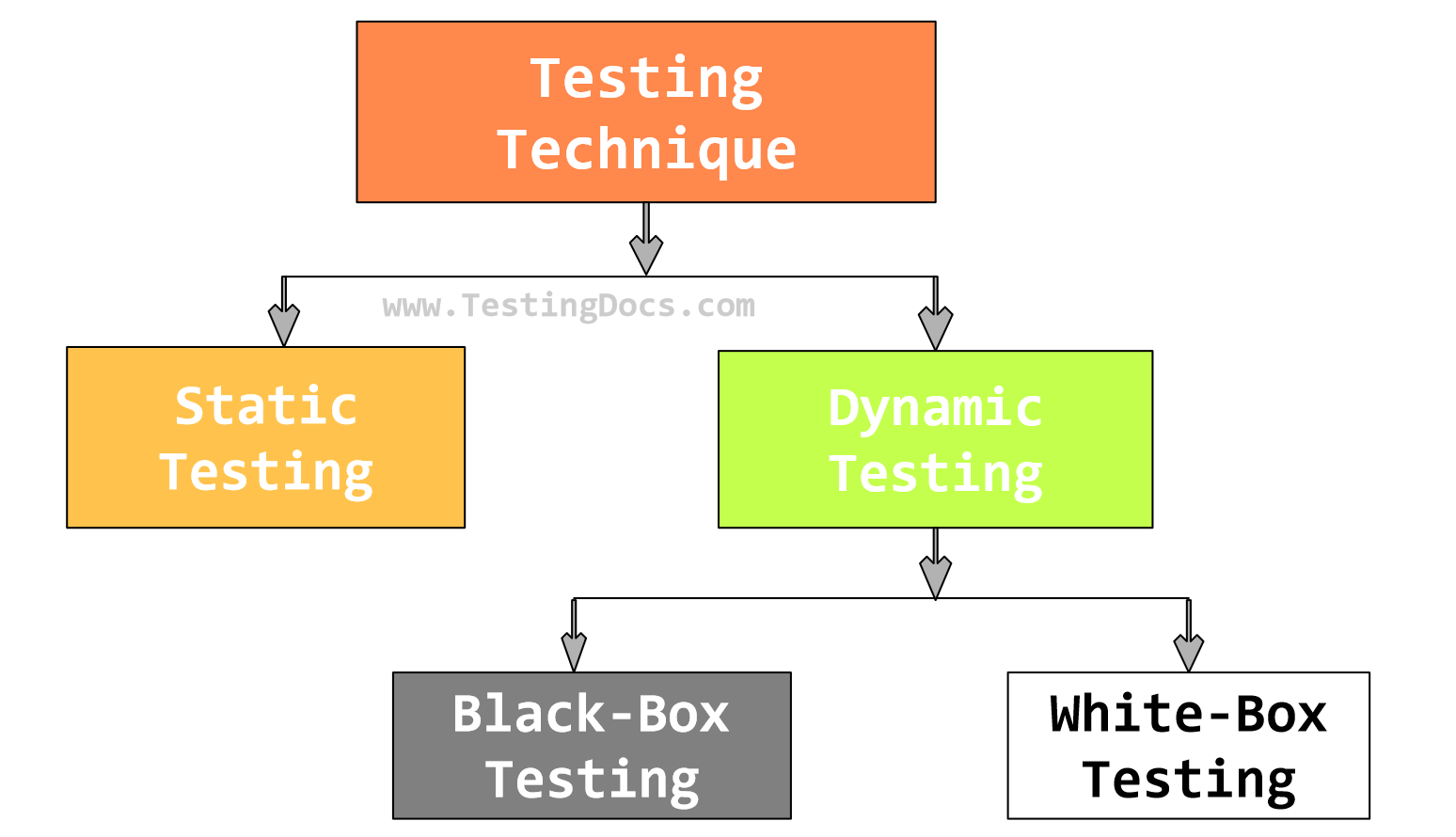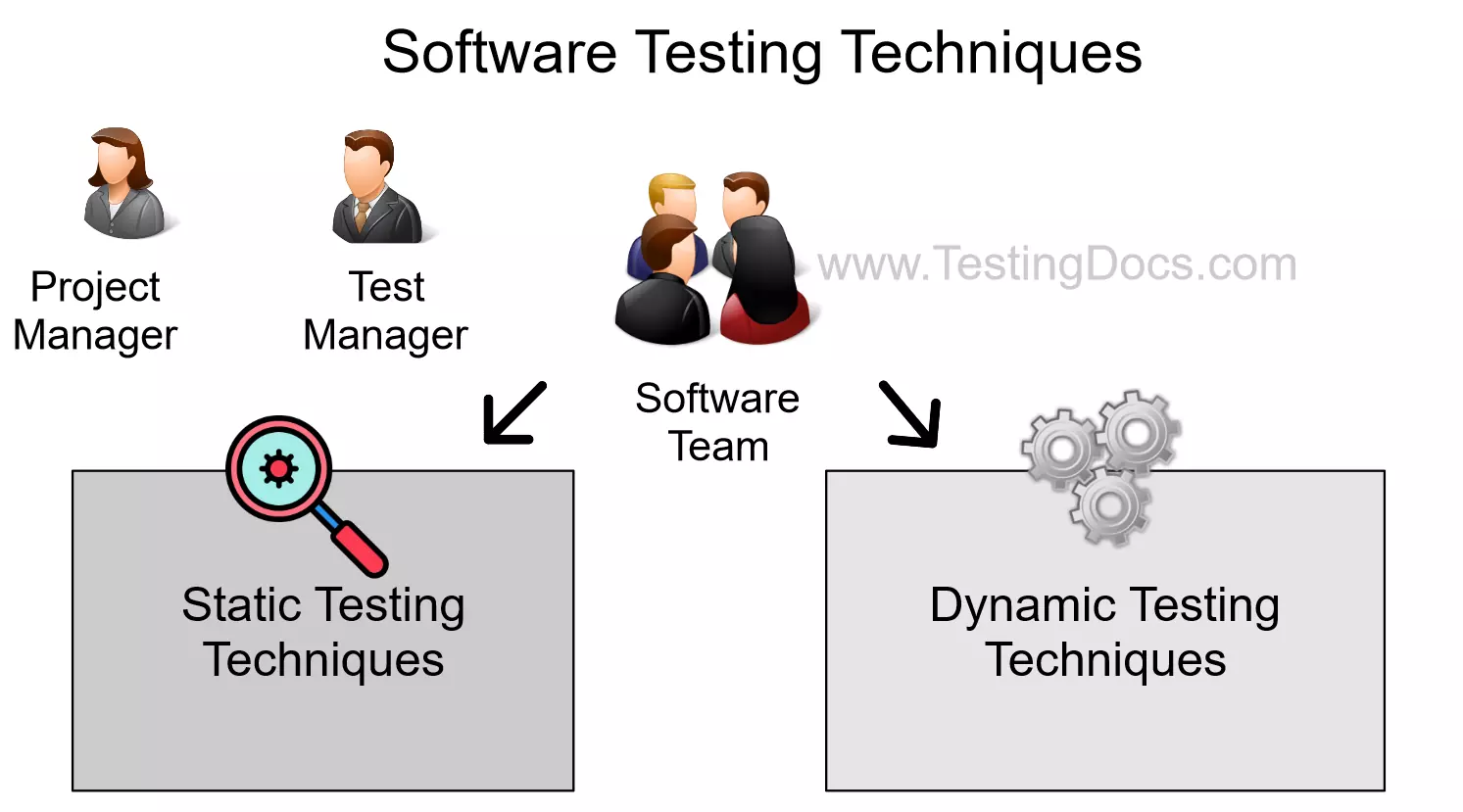Software Testing Techniques
Overview
Let’s learn about software testing techniques in this tutorial. Software testing technique is the process and approach followed by testing teams to design testcases and identify bugs in the software product to ensure that it meets the user requirements and works as expected.
Software Testing Techniques
There are different software testing techniques available, and they are typically categorized into two main categories:
- Static Testing Techniques
- Dynamic Testing Techniques
We will discuss each of the techniques in detail in separate posts.

Static Testing
In the Static testing technique, the application is not executed. The software artifacts like requirement specifications, design documents, design algorithms, source code, and documentation are analyzed to uncover defects.
https://www.testingdocs.com/static-testing-techniques/

Dynamic Testing
The dynamic testing technique involves the application being executed by the team. Dynamic testing techniques are further divided into two categories. They are:
- White-box Testing Techniques
- Black-box Testing Techniques
https://www.testingdocs.com/dynamic-testing-techniques/
Sometimes, we can also categorize testing based on the involvement of humans.
- Manual Testing
- Automated Testing
Combining these techniques can help ensure good test coverage and a testing process that enhances software quality, reliability, security, and performance. The selection of testing methods depends on various factors, including project requirements, time, project budget, etc.
Effective testing depends on the techniques and tools used by the QA team to document good test cases, uncover defects in the application, estimate and measure test efforts, etc. A good test case is a test case that has a high probability of uncovering a defect in the application.





